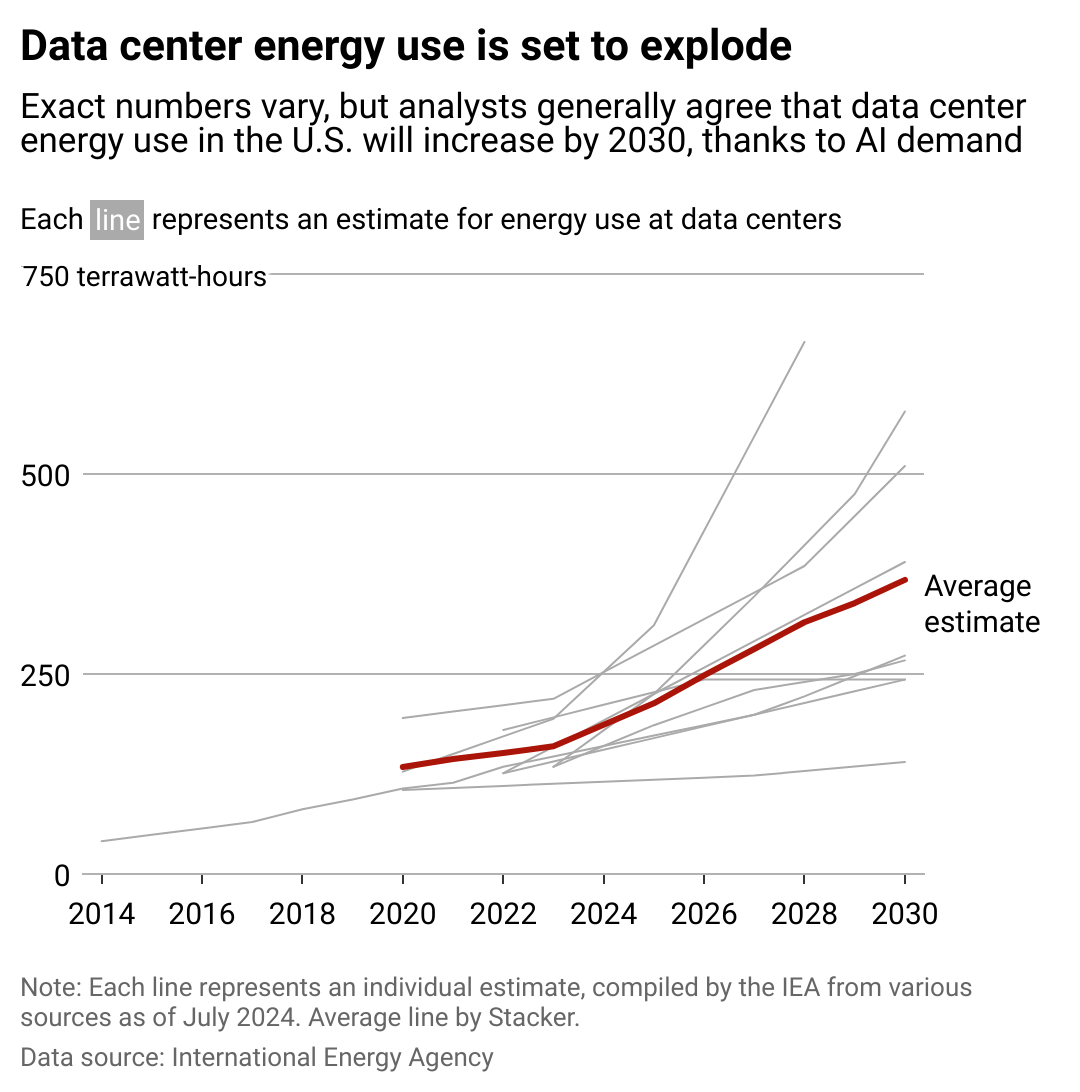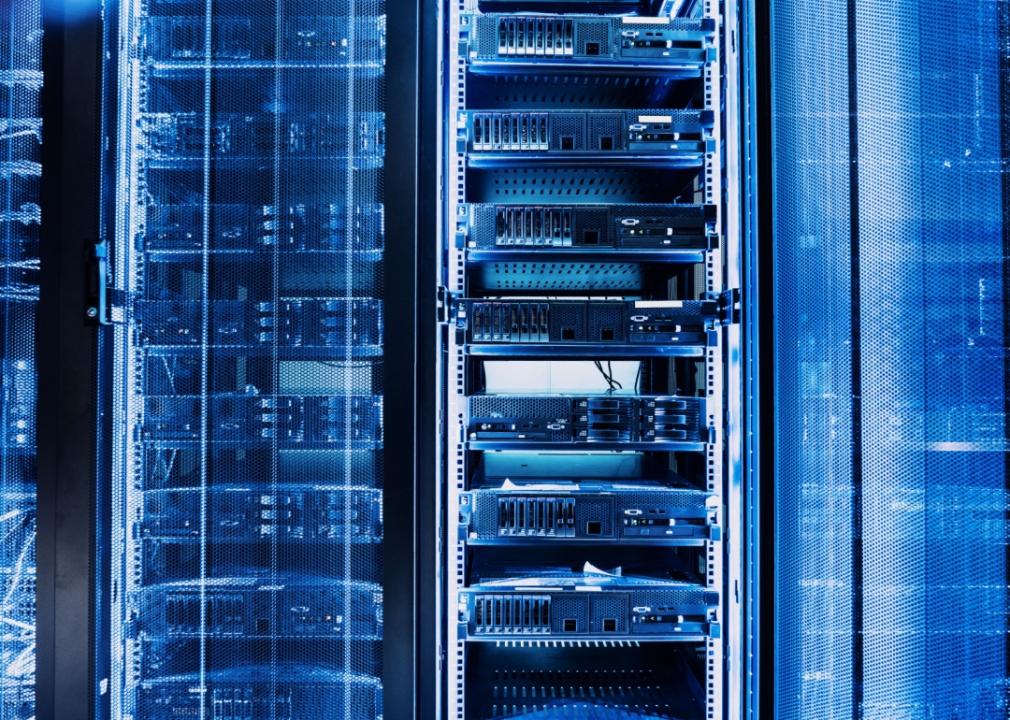AI systems are gobbling up energy. Here's what it may mean for the future of infrastructure.

ImageFlow // Shutterstock
AI systems are gobbling up energy. Here’s what it may mean for the future of infrastructure.
A closeup of a smiling young woman in headphones using laptop. Overlaying the image are several holographic-like icons and elements, suggesting the concept of AI and chatbot technology.
Artificial intelligence systems are digital, but they are very much dependent on the physical world. As demand for this virtual technology surges, tech companies that want to keep advancing AI face a much more tangible problem: sourcing enough electricity.
AI systems, particularly large language models like ChatGPT, are energy-intensive due to their immense computational needs. The leading AI models have taken in massive amounts of publicly available text on the internet. Processing the data and trying to draw insights from it both require a ton of electricity.
While exact figures are not publicly available, one estimate suggests that training GPT-4 took 50 gigawatt-hours to train. The typical American household uses about 10,800 kilowatt-hours of electricity annually. This means that training GPT-4 used enough electricity to power some 4,500 households for a year. Meanwhile, in a 2024 report, Goldman Sachs estimated that each ChatGPT query uses 10 times the electricity of a single Google search.
As AI systems continue to develop and reach more people, electricity demand is likely to increase with it. Verbit examined analyst reports to see how AI’s growth will change the future of infrastructure.
![]()

Verbit
Demand for electricity is expected to grow
A line chart showing how electricity consumption from data centers is expected to grow in the U.S.
How much electricity will AI’s growth consume? According to the Goldman Sachs report, data centers—essential for running AI models—could account for 8% of total U.S. power consumption by 2030, up from 3% in 2022. Similarly, the Boston Consulting Group estimates that data centers will increase their share of consumption to between 6% and 7.5% by 2030, compared to 2.5% in 2022.
Prior to the AI boom, demand for electricity in America had been stagnant since the mid-2000s. The sudden increase in energy consumption from data centers is straining the country’s aging infrastructure. McKinsey estimates that in order to keep up with the sudden increase in demand for electricity, utility companies will have to invest $50 billion in energy generation alone.
Some tech companies are already striking deals to secure the electricity they need. Microsoft recently signed a reported $10 billion deal with Brookfield Asset Management. Brookfield will provide the tech giant with an additional 10.5 gigawatts of renewable energy between 2026 and 2030 to help power data centers in America and Europe. Last year, Microsoft signed the world’s first deal for fusion energy with Helion Energy. The nuclear provider, also backed by OpenAI’s CEO Sam Altman, is set to start delivering electricity to Microsoft in 2028.

katjen // Shutterstock
Anticipating challenges in building electricity infrastructure
Multiple racks filled with hardware devices in a blue lit room.
The potential electricity scarcity points to growth in alternative energy sources. The Bureau of Labor Statistics projects that wind turbine technicians will be the fastest-growing occupation through 2032, with solar panel installers ranking among the top 20. Goldman Sachs also notes that new data centers will require the construction of additional natural gas pipelines. If utility companies secure regulatory approval to build the power capacity and infrastructure needed by tech companies, this could result in a significant construction boom.
Tech companies can produce software with programmers and laptops, but building physical infrastructure offers a different set of challenges. Unlike digital products, power plants, transmission lines, and data centers require vast tracts of land, complex permitting processes, and oftentimes, years of construction. They face regulatory hurdles, environmental assessments, and even local opposition. They also require specialized workers who will have their hands full.
An energy shortage could have major implications for businesses and consumers. The AI boom coincides with a surge in demand for electricity across multiple industries, including manufacturing and electric vehicles. Without ample electricity infrastructure, companies would be limited in how much technology they could deploy, and this scarcity would raise prices for consumers.
Households could also face higher electricity prices, especially if they live in an area with lots of data centers, such as Northern Virginia. Power companies could implement dynamic pricing, charging more for electricity during peak hours.
The AI boom could also impact the environment: Although their servers are increasingly being powered by renewable energy, Goldman Sachs projects that carbon dioxide emissions from data centers could double by 2030. Goldman Sachs estimates that nearly 40% of the increase in energy demand in the United States will come from data centers.
Even a revolutionary digital technology like AI has a profound impact on the physical world.
Story editing by Alizah Salario. Additional editing by Kelly Glass. Copy editing by Tim Bruns.
This story originally appeared on Verbit and was produced and
distributed in partnership with Stacker Studio.